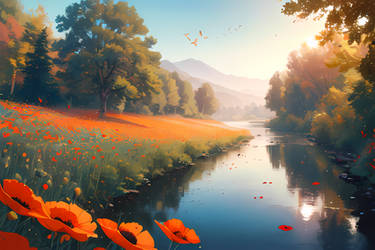ShopDreamUp AI ArtDreamUp
Deviation Actions
A little while ago, the powers that be have made me a moderator of this group. Yes, moderator, although because of technical issues I appear as a 'Co-Founder' on our front page, which I'm not (in case that makes any difference).
coxi, kyle28 and I have agreed that one of my personal journal entries might be interesting for you lot who contribute and/or follow this group, so here it comes:
I would like to sum up a selection of a few things and 'tricks' I do and use in my photography.
I'm probably doing this more for myself (I have a hard time myself to understand what I am actually doing at times...) rather than you folks (sorry) but those who care might not mind having a look; more pictures than text but let's still hope I make any sense at all.
First off, I use 35mm focal length for 95% of my photography, it allows me to include both subject(s) and surrounding/context without forcing too much wide-angle-distorstion onto the scene.
COMPOSITION
Relations
Putting things in relation, pointing out the dialogues that may consciously or unconsciously take place between different elements of a scene. There are various ways to do that (objects, structures, lines, contrasts, looks, movement, gestures, position in the frame, etc.) but it basically boils down to content and form, and how elements of content & form, or form & form etc. communicate.
Also, I am one of those who think that content is dependent on form, simply put: form is more important than content, if you will. I cannot make assumptions on things like names, thoughts, attitudes and hopes of people and objects other than what I know, and in most cases the only important thing I know of the subjects (alive or inanimate) of my street photography is their appearance, their form in the few seconds that I see and photograph (that means try to transfer their form into a photographic form that works, that states a photographic 'problem' as Winogrand would probably put it). All, or most, of the photograph's content then emerges from the photographs form(s).
This is one of the, if not the most important points and is included in most of the following points as well. Nonetheless, here are some general examples to begin with. I also feel that a wide-ish angle (as said above, usually 35mm on 35mm film for me) often helps, it makes it easier to put things into 'reciprocity' with their surrounding. And I do not mind stopping down quite a bit (I know photographers who have an actual f16ophobia, but I think it's possible to squeeze out interesting shots without happy bokeh in them).
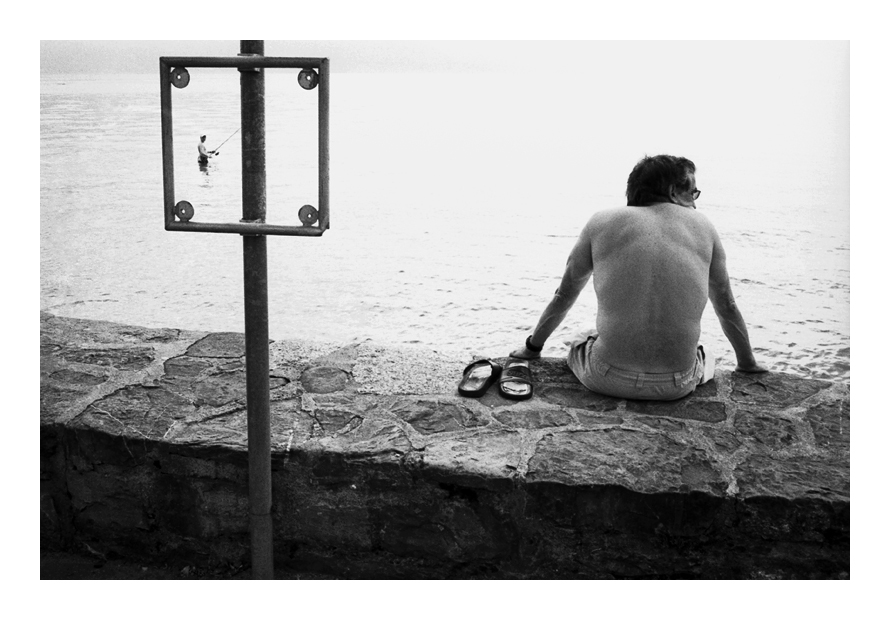
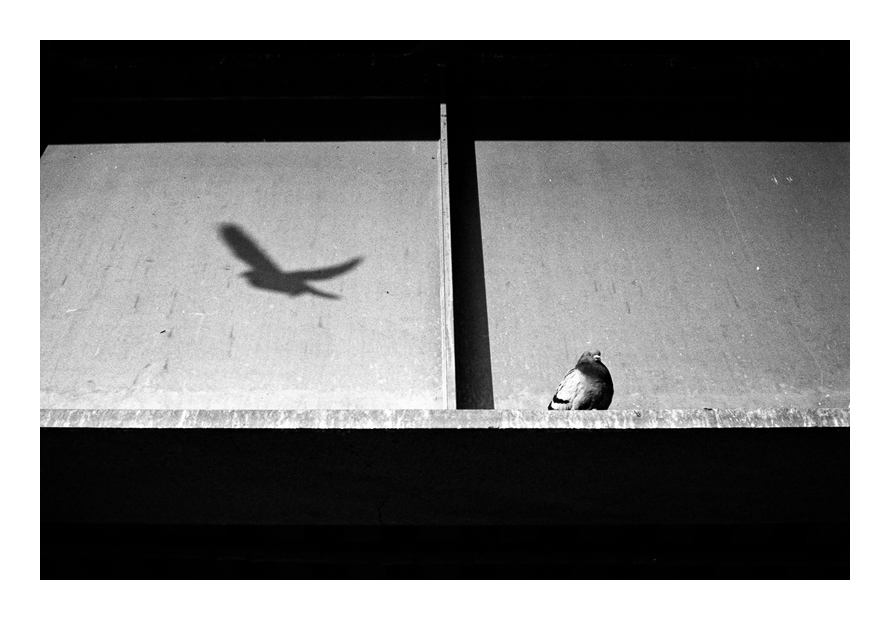

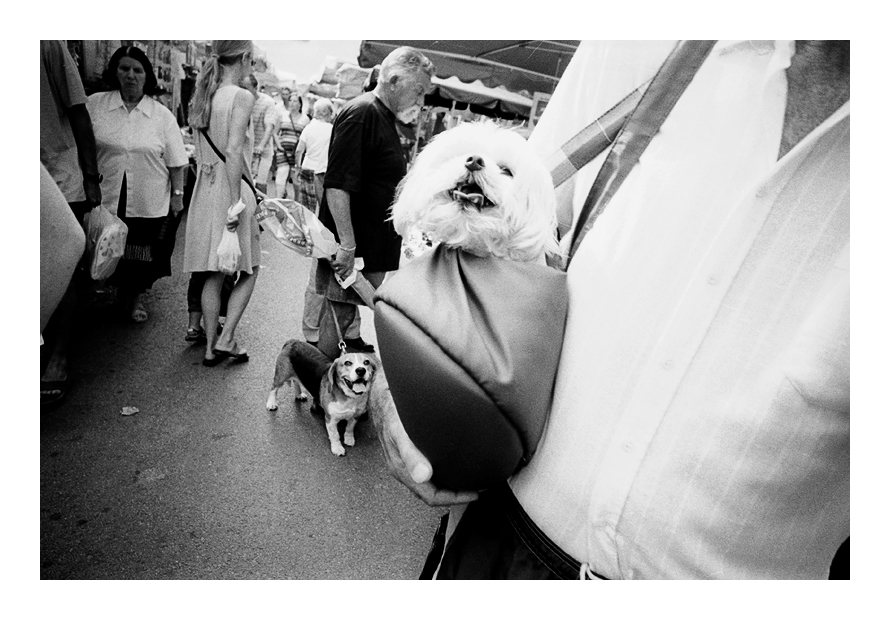
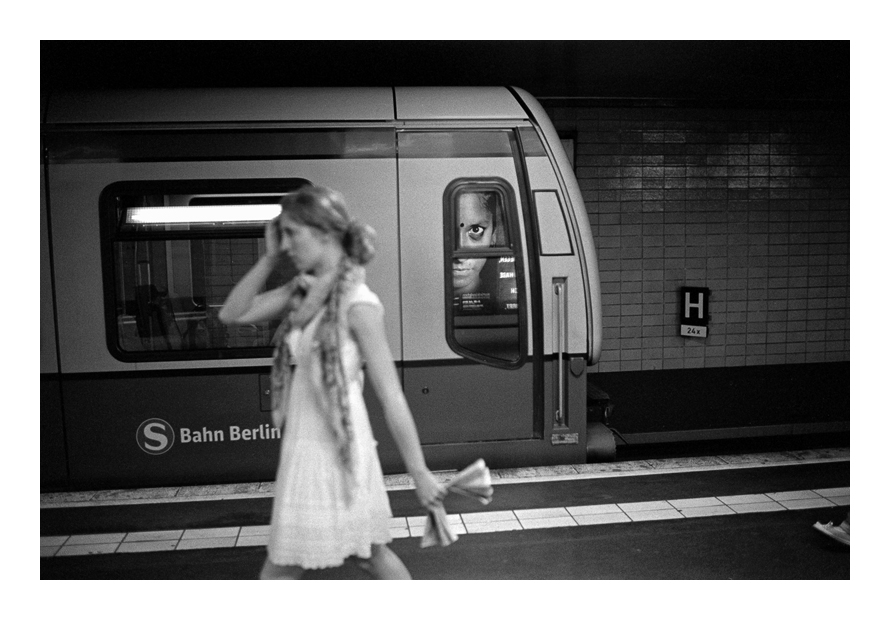
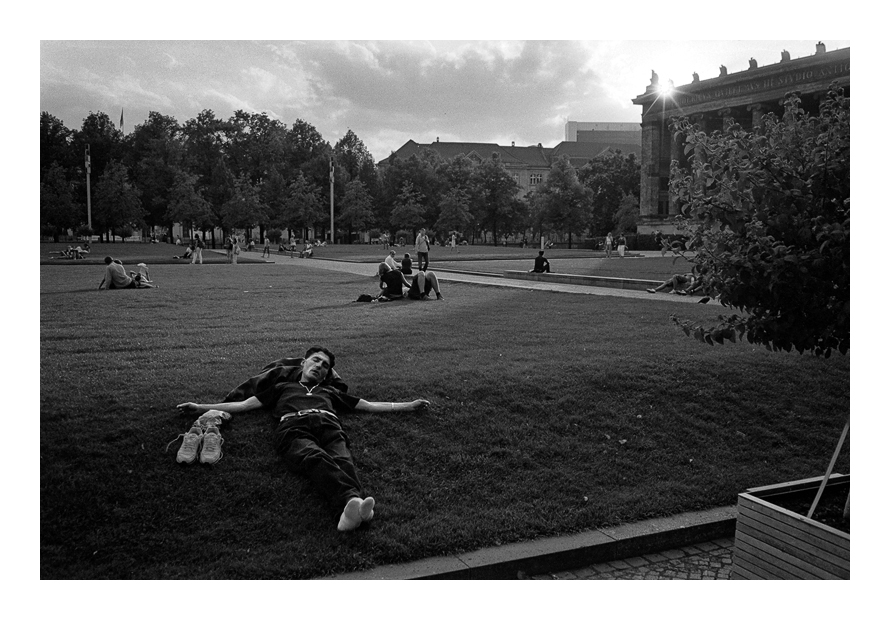

Figurative symmetry
...is what I call a form of symmetrical composition, in which precision or mathematical correctness of the symmetry do not really matter, while, semantically, the beholder still understands it as symmetrical. I usually prefer to use it centrally.
this 'symmetry' also often begs to be broken by including an element on the on side but not on the other, or by shifting or turning one of the elements in the picture etc etc. I love the 'dialogues' it can create in between the different parts and elements or the accent it can put on the centre of this symmetry.
In short, you could say: 'symmetry, but not really.'
Here's what I mean:
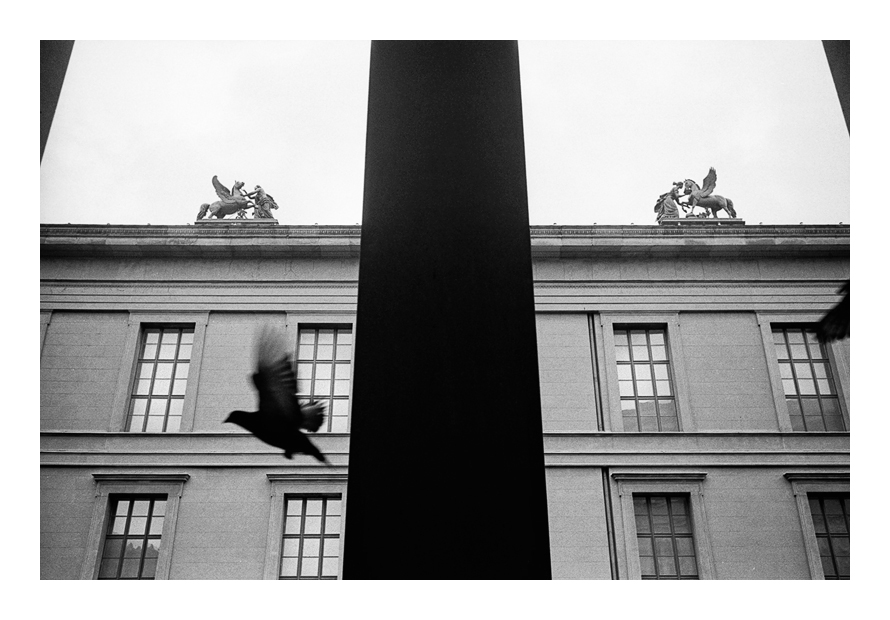

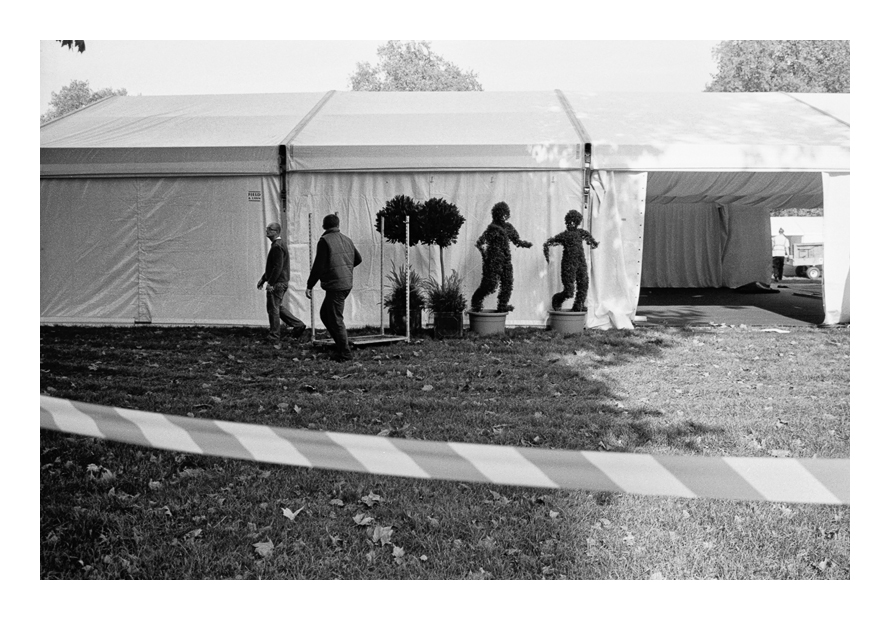
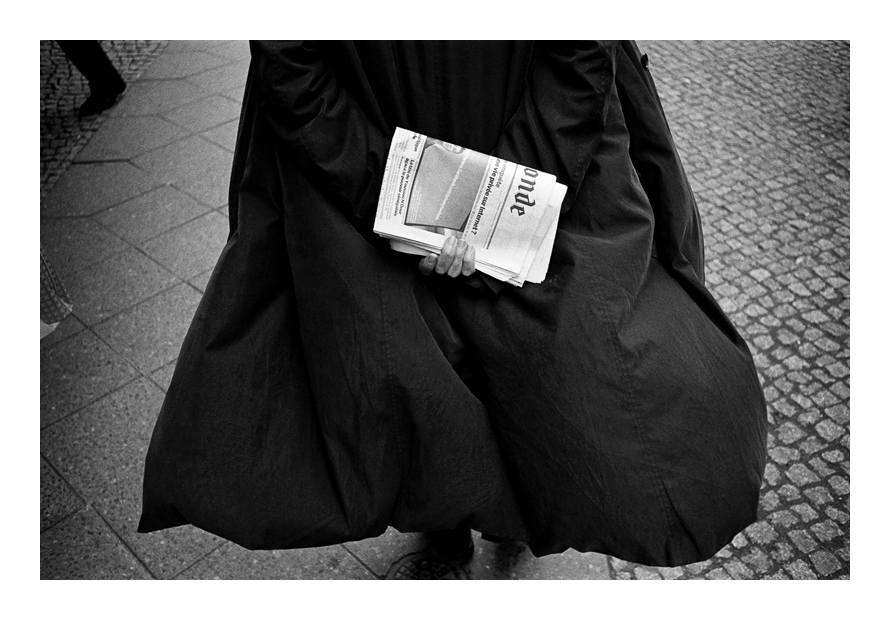

Repetition, imitation, duplication
Repeating lines, subjects, attitudes, poses, shapes and the like are an effective way of studying all kinds of different facettes of the human condition (oh by the way; no, you don't need a human being in the frame in order to treat this odd thing called 'human condition'). If you ask me. Or of whatever you want. I like it when objects and/or people are unconsciously 'quoting' another element of the scene, or breaking some sort of repetition by i.e. a juxtaposition of some sort.
It often comes together without anyone noticing (including myself), but I try hard to see and capture it when it happens.
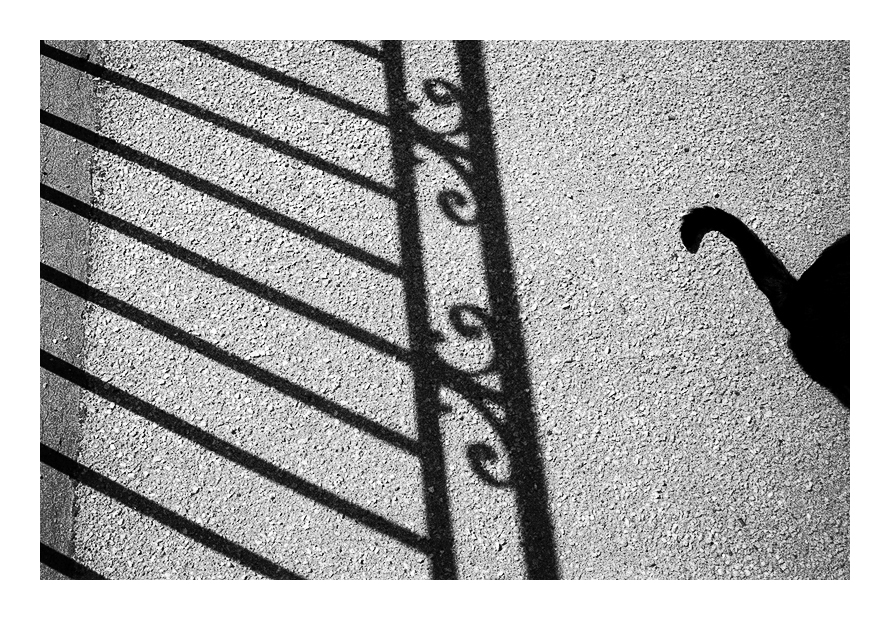
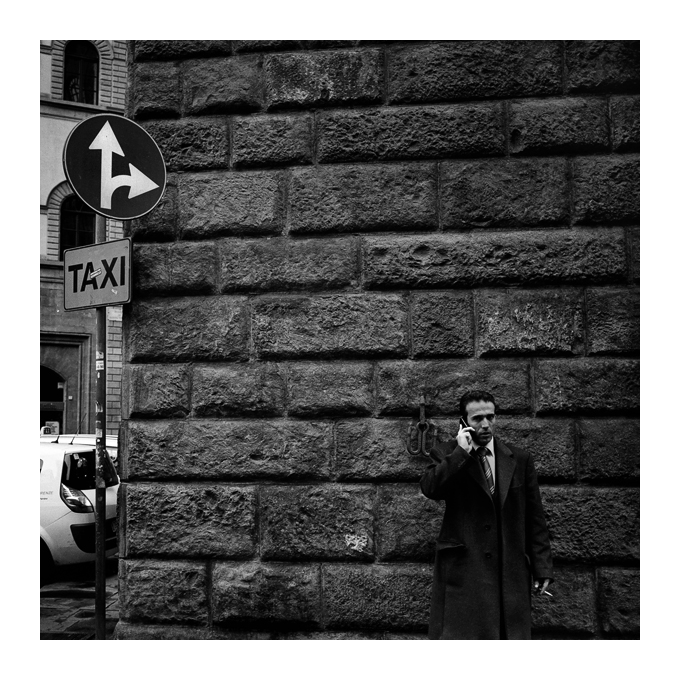

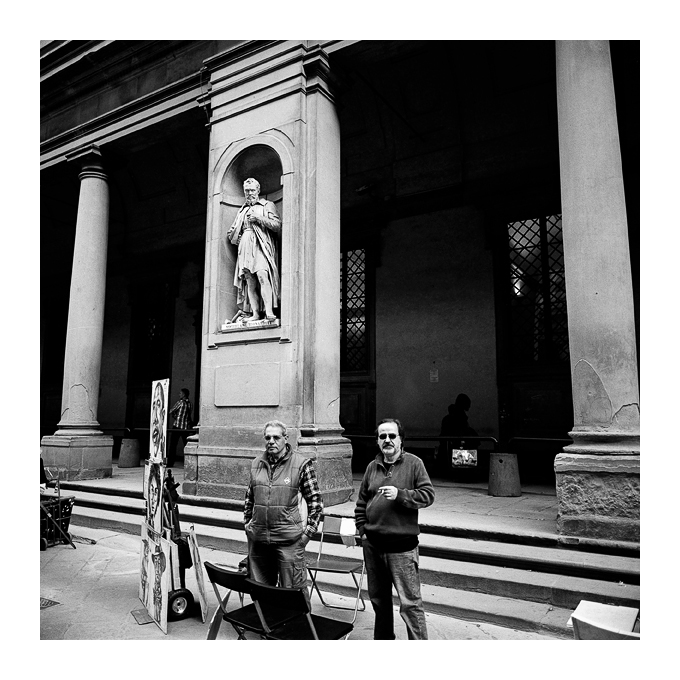


CONTRAST
Not necessarily amplified image contrast, but strong 'natural' subject contrast. Highlighted elements in the shade, pronounced shadows, silhouettes. Classic.
As for shadows, I love it when they suggest something else than what is actually happening, or when they show something that IS happening but hard or impossible to see otherwise.
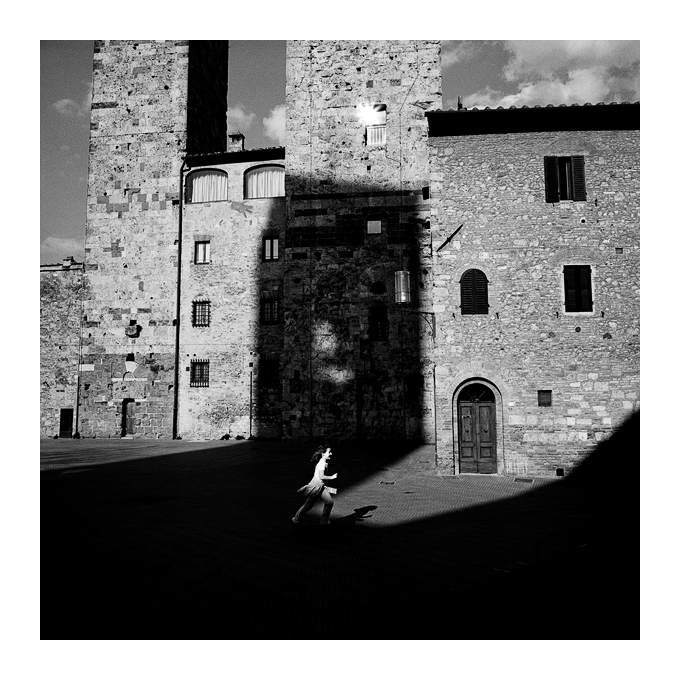
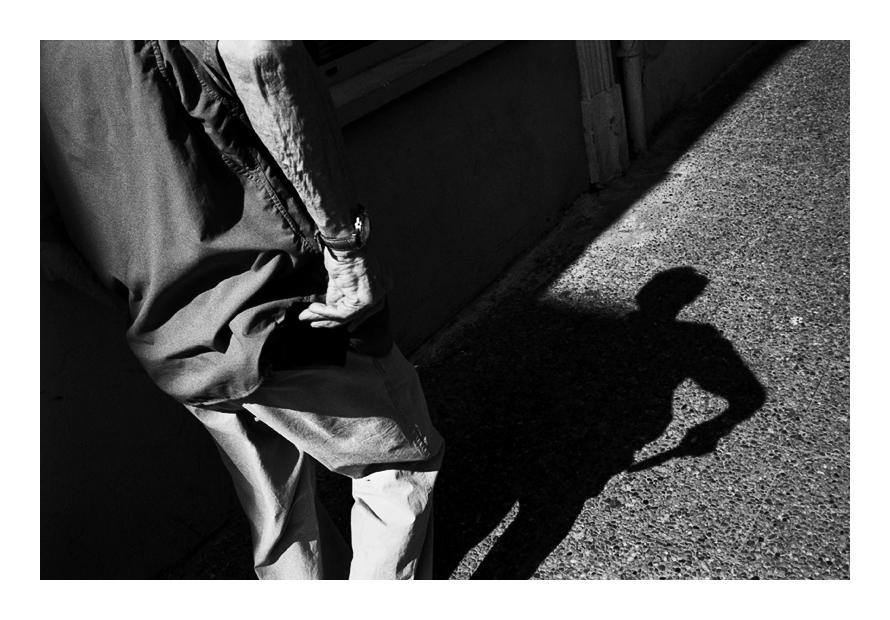

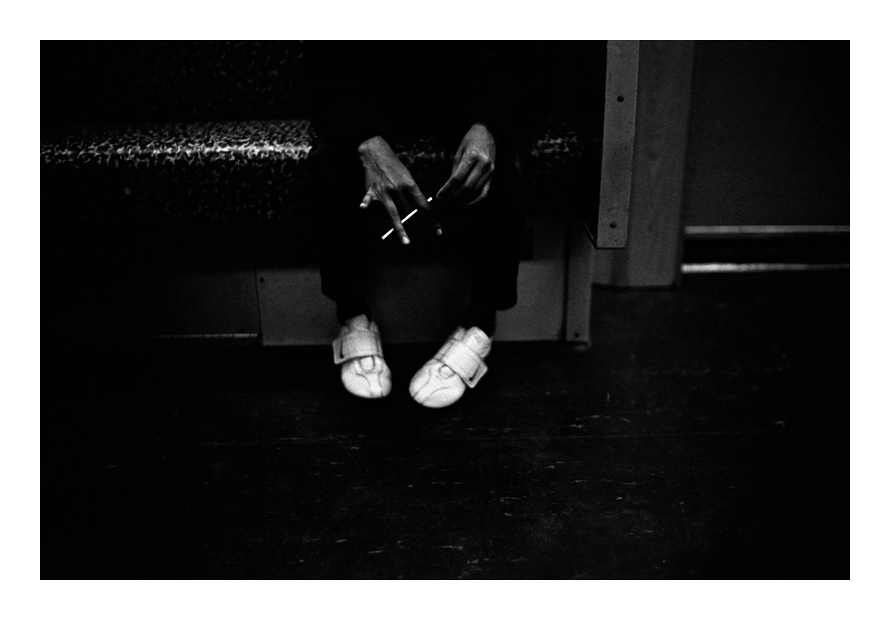
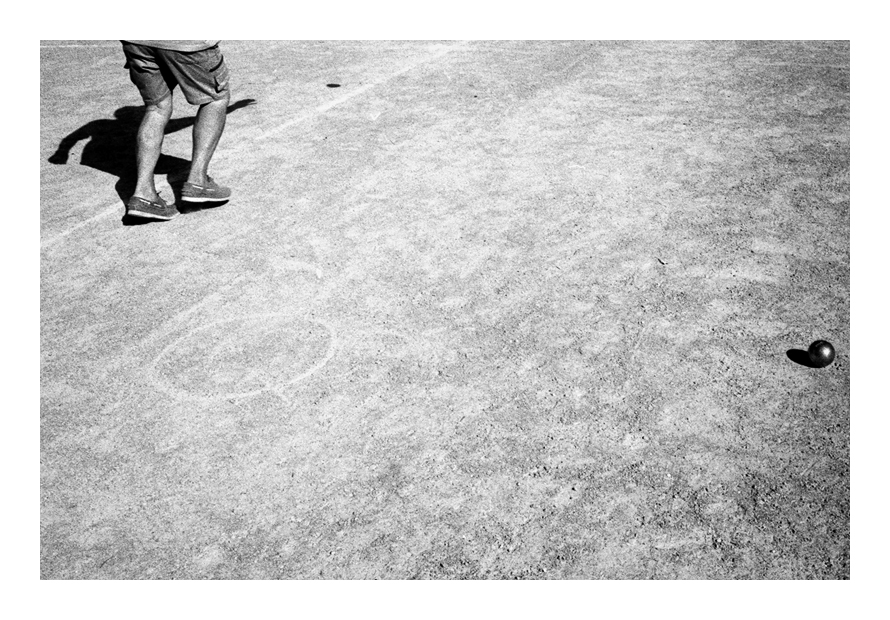
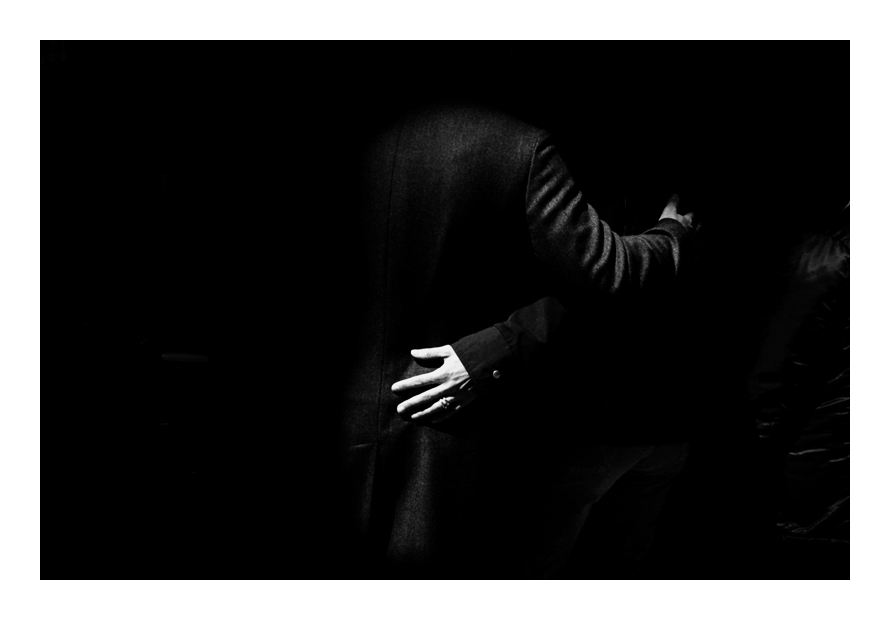
DYNAMICS
...are best served as well placed alive and moving subjects (children and birds, for example, have proven to work well) in a calm, static or even lifeless environment (i.e. architectural structures).
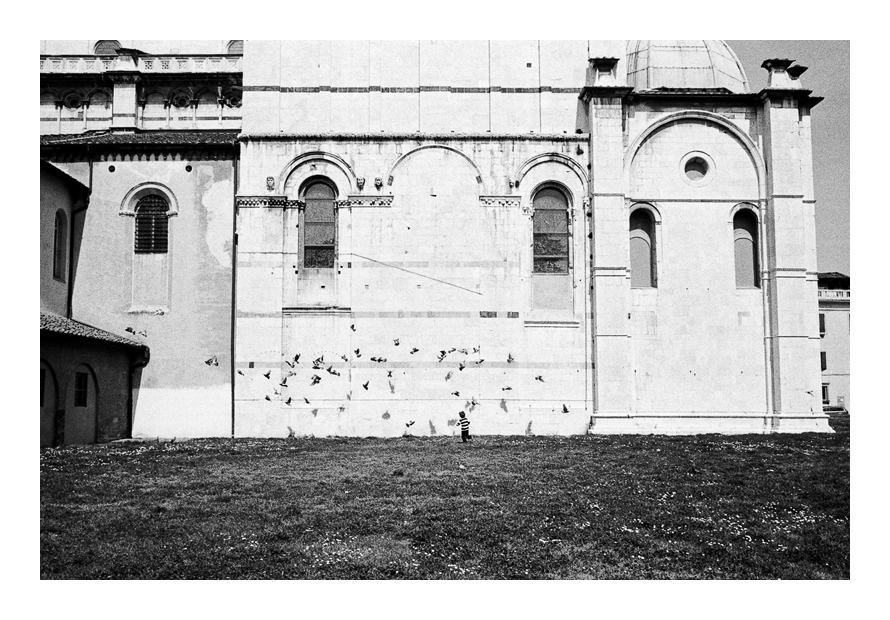


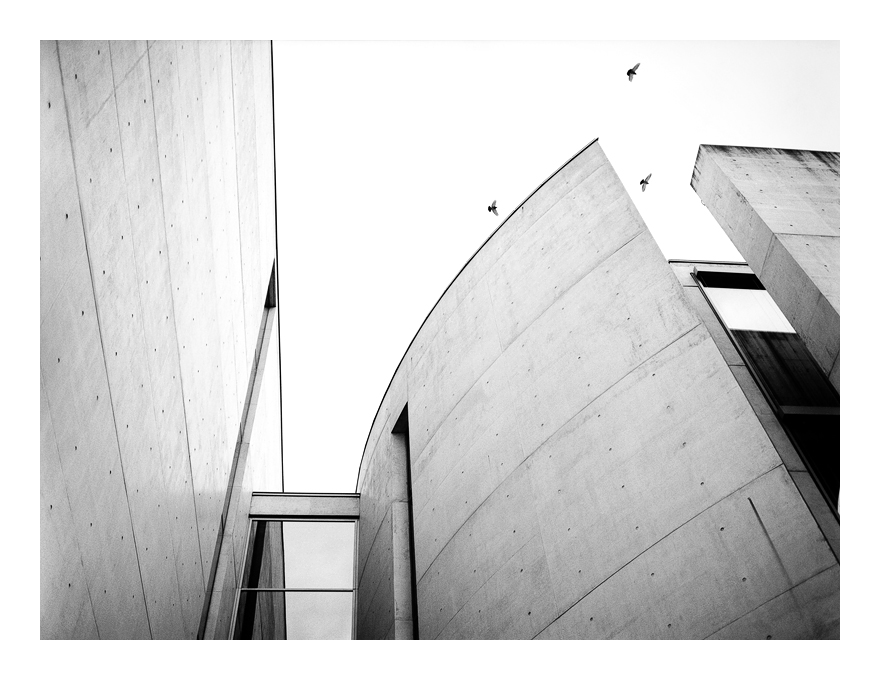

FOCUS
I stop down a lot, but if there's shallow depth of field, I try to remember that the out-of-focus areas can still communicate with the in-focus ones. I am usually not a big fan of 'street' shots that have something mildly interesting in focus, while the rest of the frame drowns in unidentifiable blur. Depends on what actually is in focus though, naturally.

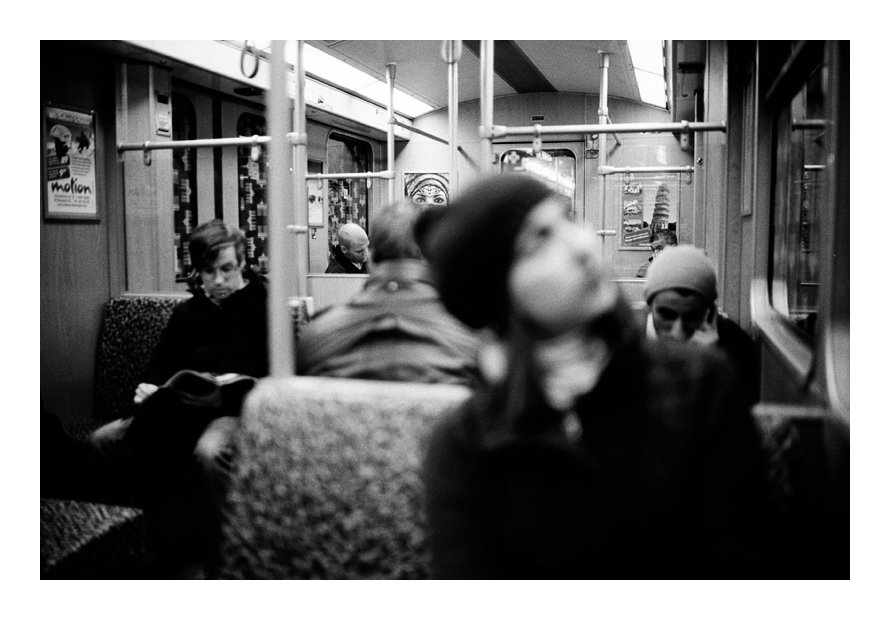

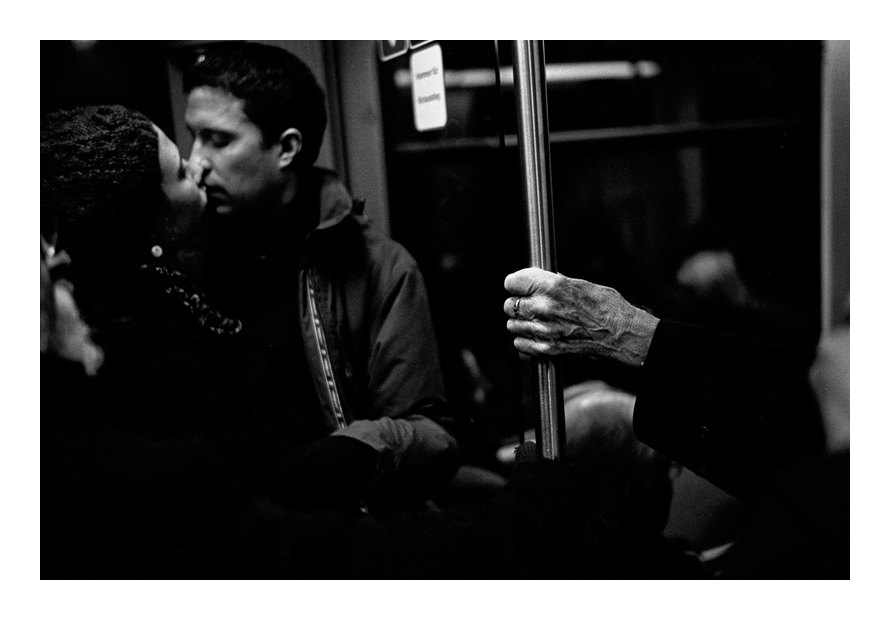
TIMING
...is important. Always. Sometimes even more!

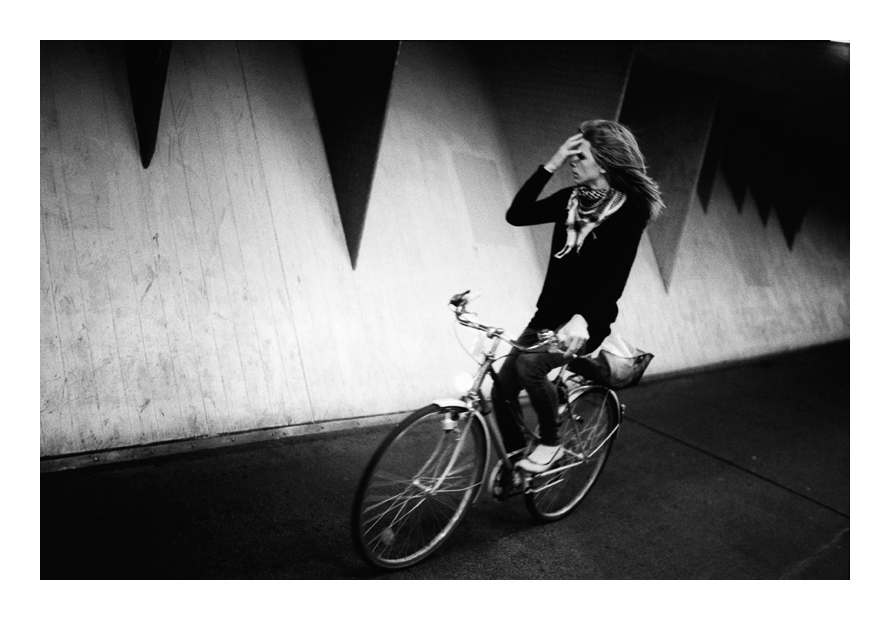



ODD STUFF
Obviously. Funny or not, there's something undeniably intriguing about little things that make you go wtf. Or omg. Or 'Oh dear!'. Or 'Whuuuud?'.
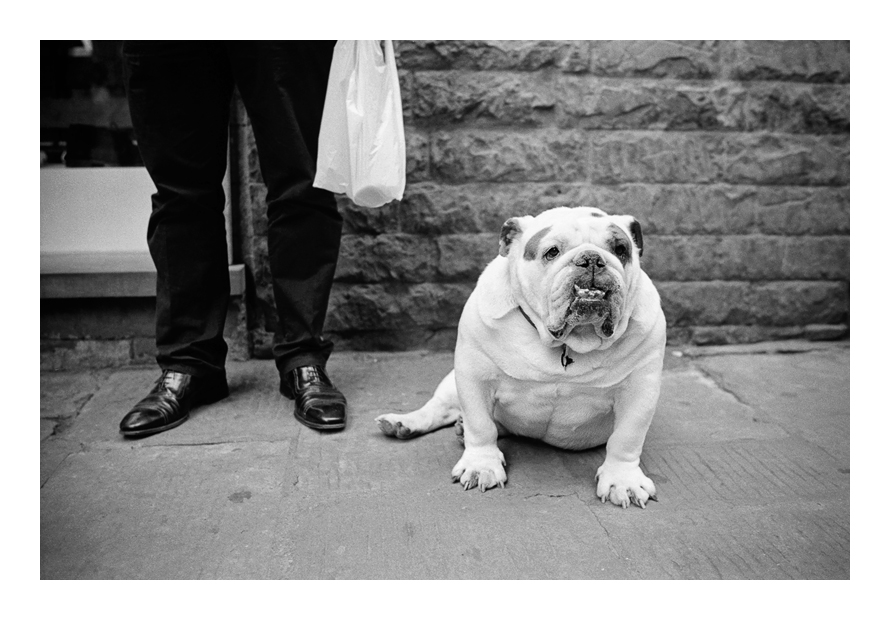

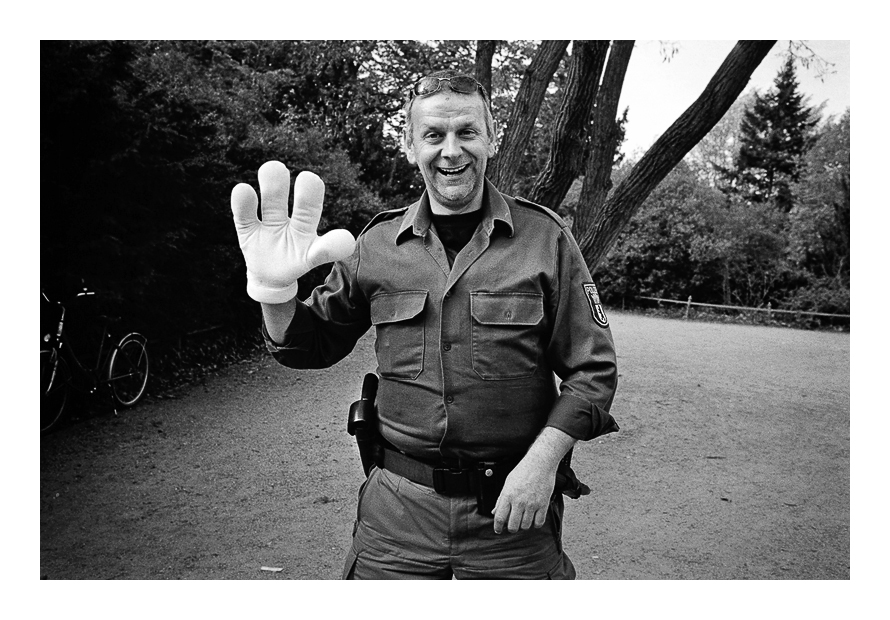
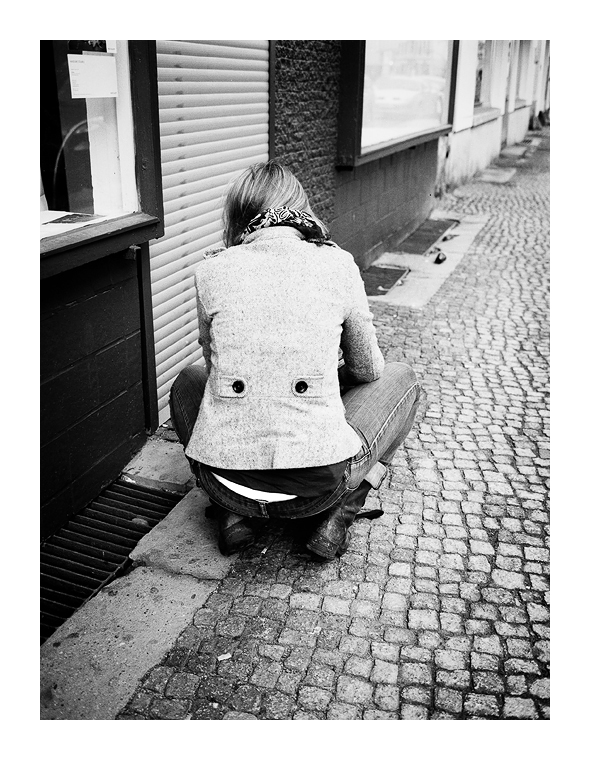

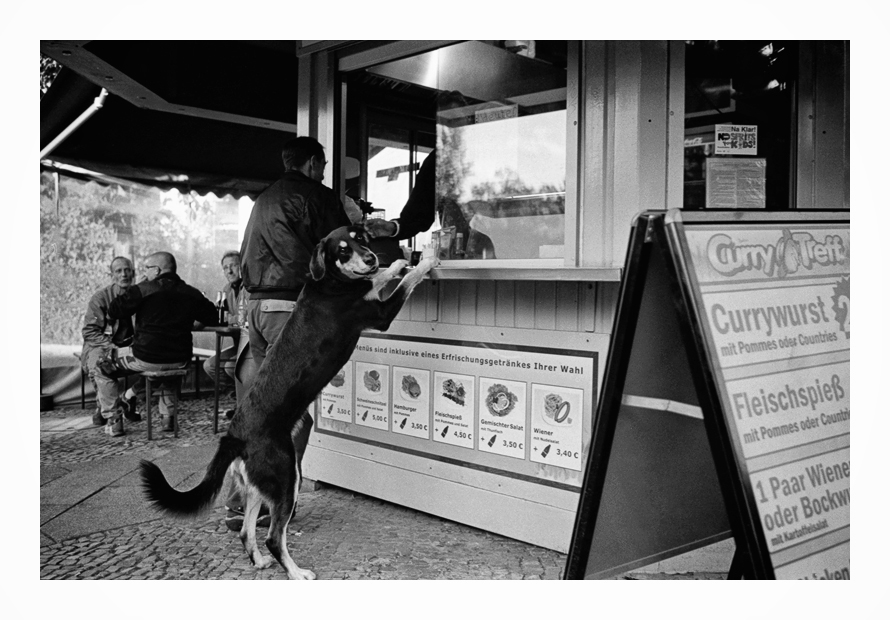
coxi, kyle28 and I have agreed that one of my personal journal entries might be interesting for you lot who contribute and/or follow this group, so here it comes:
I would like to sum up a selection of a few things and 'tricks' I do and use in my photography.
I'm probably doing this more for myself (I have a hard time myself to understand what I am actually doing at times...) rather than you folks (sorry) but those who care might not mind having a look; more pictures than text but let's still hope I make any sense at all.
First off, I use 35mm focal length for 95% of my photography, it allows me to include both subject(s) and surrounding/context without forcing too much wide-angle-distorstion onto the scene.
COMPOSITION
Relations
Putting things in relation, pointing out the dialogues that may consciously or unconsciously take place between different elements of a scene. There are various ways to do that (objects, structures, lines, contrasts, looks, movement, gestures, position in the frame, etc.) but it basically boils down to content and form, and how elements of content & form, or form & form etc. communicate.
Also, I am one of those who think that content is dependent on form, simply put: form is more important than content, if you will. I cannot make assumptions on things like names, thoughts, attitudes and hopes of people and objects other than what I know, and in most cases the only important thing I know of the subjects (alive or inanimate) of my street photography is their appearance, their form in the few seconds that I see and photograph (that means try to transfer their form into a photographic form that works, that states a photographic 'problem' as Winogrand would probably put it). All, or most, of the photograph's content then emerges from the photographs form(s).
This is one of the, if not the most important points and is included in most of the following points as well. Nonetheless, here are some general examples to begin with. I also feel that a wide-ish angle (as said above, usually 35mm on 35mm film for me) often helps, it makes it easier to put things into 'reciprocity' with their surrounding. And I do not mind stopping down quite a bit (I know photographers who have an actual f16ophobia, but I think it's possible to squeeze out interesting shots without happy bokeh in them).







Figurative symmetry
...is what I call a form of symmetrical composition, in which precision or mathematical correctness of the symmetry do not really matter, while, semantically, the beholder still understands it as symmetrical. I usually prefer to use it centrally.
this 'symmetry' also often begs to be broken by including an element on the on side but not on the other, or by shifting or turning one of the elements in the picture etc etc. I love the 'dialogues' it can create in between the different parts and elements or the accent it can put on the centre of this symmetry.
In short, you could say: 'symmetry, but not really.'
Here's what I mean:





Repetition, imitation, duplication
Repeating lines, subjects, attitudes, poses, shapes and the like are an effective way of studying all kinds of different facettes of the human condition (oh by the way; no, you don't need a human being in the frame in order to treat this odd thing called 'human condition'). If you ask me. Or of whatever you want. I like it when objects and/or people are unconsciously 'quoting' another element of the scene, or breaking some sort of repetition by i.e. a juxtaposition of some sort.
It often comes together without anyone noticing (including myself), but I try hard to see and capture it when it happens.






CONTRAST
Not necessarily amplified image contrast, but strong 'natural' subject contrast. Highlighted elements in the shade, pronounced shadows, silhouettes. Classic.
As for shadows, I love it when they suggest something else than what is actually happening, or when they show something that IS happening but hard or impossible to see otherwise.






DYNAMICS
...are best served as well placed alive and moving subjects (children and birds, for example, have proven to work well) in a calm, static or even lifeless environment (i.e. architectural structures).





FOCUS
I stop down a lot, but if there's shallow depth of field, I try to remember that the out-of-focus areas can still communicate with the in-focus ones. I am usually not a big fan of 'street' shots that have something mildly interesting in focus, while the rest of the frame drowns in unidentifiable blur. Depends on what actually is in focus though, naturally.




TIMING
...is important. Always. Sometimes even more!





ODD STUFF
Obviously. Funny or not, there's something undeniably intriguing about little things that make you go wtf. Or omg. Or 'Oh dear!'. Or 'Whuuuud?'.






That's it. I deliberately included a few of the pictures more than once, sorry if it's too many.
Claire Atkinson - New Moderator
Hi everyone,
I was invited to become a moderator on here a little while ago and I always meant to write something. So here you go.
I've kept a lower profile on here than I would have liked but, you know..time is always of the essence. I am happy to be on here anyway, I think it has the potential to be a great group, the focus is definitely in the right places.
When I think about it, a few of my first 'contemporary' street influences are represented by some of the photographers in this group. Before 'street photography now' there was not many new examples of street photography. So it's good to stay connected!
Anyway, to say a little more ab
mid-month menage #1
Hello #street.
It is good to see that the little changes and additional staff we treated the group with are apparently bearing fruit. We have more - and more diverse - gallery submissions and a more active mod-squad to deal with them, thank you all for your submissions. We do realise that at the moment our gallery features a lot of work coming from current moderators of the group, but you are going to have to believe us that we have no intentions of accepting lower standards from staff members. Keep in mind that they weren't necessarily staff when they submitted their work and that, unfortunately, the current staff consists for a big part of
a bigger squad
We are very happy to present to you our three new moderators:
Claire / hardtomakeastand (https://www.deviantart.com/hardtomakeastand)
:thumb197926885: :thumb167846494: :thumb200178349:
Eyal / eyalbin (https://www.deviantart.com/eyalbin)
:thumb196037020: :thumb198399330: :thumb196777008:
Shane / bdwfh (https://www.deviantart.com/bdwfh)
:thumb198546609: :thumb196106380: :thumb184762312:
It's a cool thing to have such an international staff, with french, austrian, american, english, irish, australian, israeli and german nationalities being represented (did I forget one?).
keep shooting, brothers and sisters.
street (https://www.deviantart.com/street).
#street changes and guidelines
Hello street (https://www.deviantart.com/street)!
Here's a few things.
Membership guidelines
This has been a little confused and confusing in the past, so it is time to make a clear statement:
We require members to show primary interest in street photography through their dA-gallery, we want to see some enthusiasm. If you think you do but have been rejected before, please try again.
Contributors are hand-picked by the staff, that is moderators, co-founders and founders.
Submission guidelines
Please only suggest what you consider your best work. The group's gallery is meant for photographers that are part of the group, the group's favourites are for street photography w
Featured in Groups
© 2011 - 2024 street
Comments29
Join the community to add your comment. Already a deviant? Log In
Awesome information and pictures!
